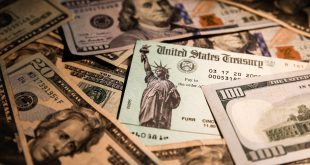Commenting on key financial assets, in an interview with Dubai TV, Mohamed Hashad, Chief Strategist at Noor Capital and a member of the American Association of Technical Analysts, highlighted that markets are closely.
Q: Let’s start with gold prices, which recorded significant gains over the past year. Do current conditions support the continuation of gold’s upward trend?
A: Indeed, gold has been one of the most profitable investment tools during 2024. Gold prices gained approximately 27.5% at the start of the first trading sessions this year. Additionally, gold achieved its best annual performance since 2014. All indications suggest that the upward trend is likely to continue, particularly with the ongoing geopolitical tensions in various parts of the world. Moreover, central banks, led by the Federal Reserve, have begun reducing interest rates. Currently, markets are focusing on the upcoming official inauguration of Donald Trump on January 20, which may bring the imposition of tariffs. This could lead to higher inflation and potentially trigger trade wars, paving the way for gold prices to achieve further gains this year.
Q: How do you interpret the recovery in oil prices during the first trading sessions of this year?
A: Oil prices have benefited significantly from several factors, reaching $74 per barrel. Key contributors include ongoing political tensions in the Middle East, positive expectations regarding the recovery of economic growth in 2025, and a decline in U.S. crude inventories by 1.2 million barrels last week. These factors combined have maintained the upward momentum, and I believe there is room for further increases.
Q: Goldman Sachs has predicted a decline in Iran’s oil production and exports in the second quarter of the year due to changes in internal policies. How will this impact oil price movements?
A: I believe the impact of this decline will be limited because Iran does not produce large quantities of oil compared to other countries. Additionally, there are multiple alternatives, such as Saudi Arabia and other nations. Iran’s production levels are not significant enough to disrupt the market. Furthermore, OPEC can effectively balance supply and demand levels among its member countries.
Q: Regarding cryptocurrencies, Bitcoin continues to hit record highs, surpassing the $100,000 threshold. As you mentioned, all eyes are on Trump’s potential return to the presidency, especially since he supports cryptocurrencies. What factors are driving Bitcoin’s rise?
A: As I mentioned, there might be a favorable environment for this type of digital asset under Donald Trump’s policies. Institutional inflows, such as pension and sovereign wealth funds participation, could help support prices. Additionally, macroeconomic trends like lower interest rates and growing demand from exchange-traded funds contribute to increasing cash flows from both institutions and individuals. I believe these combined factors support the continued rise of digital currencies, especially Bitcoin.
Q: What about the U.S. dollar? Where is it headed at the beginning of this year?
A: There is a degree of uncertainty surrounding the dollar’s movements. The main question is whether the Federal Reserve will continue cutting interest rates at a pace exceeding market expectations. This depends on the anticipated economic policies under Donald Trump, such as imposing new tariffs, which could lead to higher inflation. Such a scenario might place Jerome Powell and the Federal Reserve in a challenging position.
Q: Lastly, can you summarize the key events the markets are awaiting this week?
A: The most important events are coming from the United States, where we are anticipating job openings data, job turnover rates, U.S. employment data, average wages, and unemployment rates.
 Noor Trends News, Technical Analysis, Educational Tools and Recommendations
Noor Trends News, Technical Analysis, Educational Tools and Recommendations




